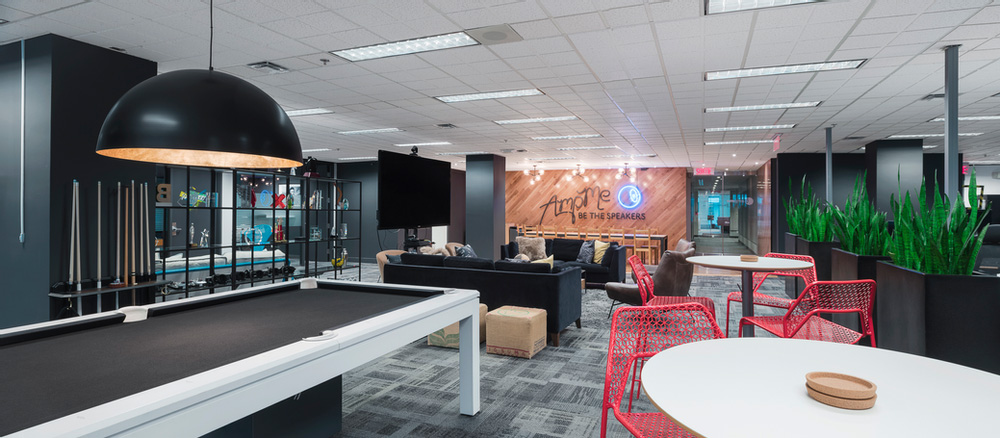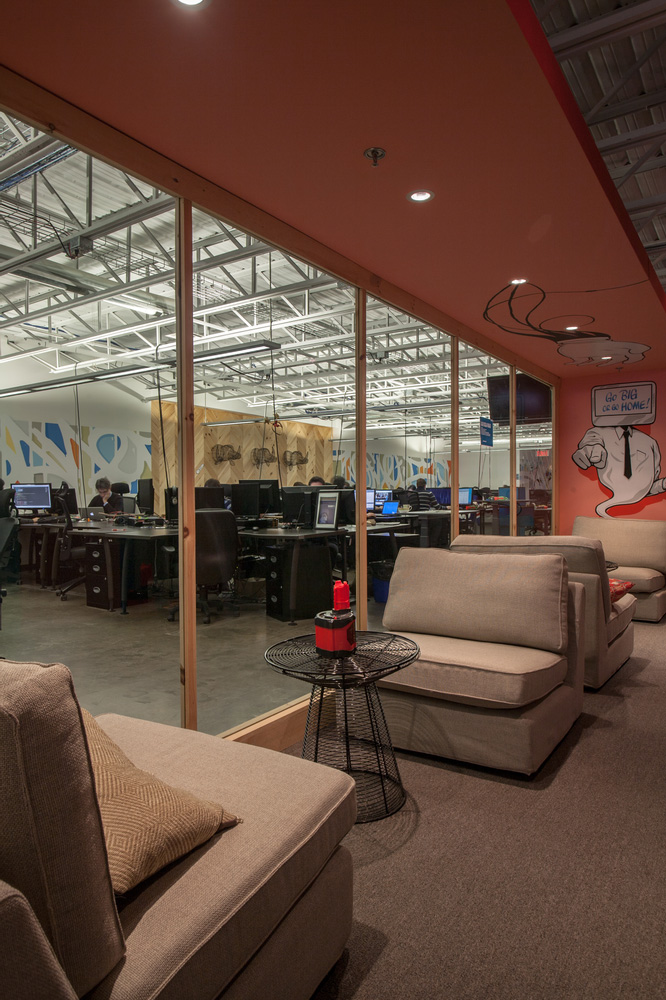In recent years, the configurations of workspaces are changing. Since the 50s and having a peak in the 70s, companies have settled on the model of a society based on sedentary lifestyle where each employee has his own office and equipment and physical space that can customize as he pleases.
Nowadays, thanks in part to the evolution of new information and communication technologies, an employee can work from anywhere, anytime. A multitude of places: home, cafes, libraries, transport, third-places for example, become potential areas of work in the same way as the traditional office. The office is no longer static but becomes a portable office, moving according to the movements of the worker. This is what we call: nomadic work or “free work”.
Where does nomadic work come from?
Nomadism is born of a quadruple observation:
- Technological evolutions (the digital boom, the rapid development of 3G and 4G, which amplifies broadband connections and the miniaturization of electronics in others) provide access to its work tools from anywhere and at any time.
- Employees are increasingly attached to their quality of life at work. They seek a better balance between professional life and personal life. They want flexibility in their schedules allowing them to reduce their transport time.
- The evolution of the various tasks of the company towards “project” type missions that require specific needs and organization on an ad hoc basis.
- The occupancy rate of an office is 60%. Every square meter at a very high cost for the company (today almost 40% of the assets of a company are dedicated to real estate costs).
Nomadic work challenges the physical office that we have experienced so far because it deeply modifies the relationship of individuals to work and the way they work.

Done with the open-space, nicknamed very often the “henhouse”, with the large office of the head of department at the end of the corridor. The time of partitioning is over. The relationship to work is evolving and companies need to adapt traditional workspaces to promote the mobility of their employees both inside and outside their premises.
There is therefore differentiation between extra-firm nomadism (mobility of the employee outside the company within new work spaces) and intra-company nomadism (mobility of the employee within the walls of his company).
The different forms of extra-company nomadism
The “co-working”
Co-working is trending. This new way of organizing work is based on a workspace that is shared by several workers. These spaces of co-working or third-places favor the exchanges and the synergies between the contractors who work there.
First of all very popular amongst self-employed, because this form of organization allows them to break their isolation while reducing their professional expenses, co-working now extends to employees. The spaces of co-working are places of sharing, exchange and conviviality. Indeed, in offices set up as “professional roommates”, several people cooperate whether they are self-employed or employees of various companies, each operating in a field of activities often different. The exchanges between the members of the third places allow them to enrich each other, to create synergies, working groups or discussion and to develop a network of businesses. More and more workspaces are offered in the form of co-working, notably because of the rise in rents for office space.
The “home office”
Thanks to new communication tools and the possibility of extending working hours, more and more employers are allowing homework. The employee will be able to set up his own workspace at his home office. It will be a professional place that the person will have designed according to the needs that his position requires but also his desires. However, the home office must be located in a pleasant and functional environment, be well isolated from any noise and have comfortable furniture. Just as if he were in the walls of his business, the employee will not be distracted by his familiar surroundings and be productive.

The different forms of intra-company nomadism
Desk Sharing
Desk sharing, which is the most extreme form of the open space philosophy, is characterized by the fact that employees no longer have dedicated offices. More clearly, it’s about sharing your office with other colleagues. Thus each employee is assigned a workstation based on availability when he arrives in the company. Employees may never have the same office and not be close to their usual co-workers. To gain square meters and avoid unoccupied workstations when employees are traveling, on leave or sick, the company will reduce the total number of workstations.
Desk sharing is increasingly neglected in favor of the Flex-office, which is much more adaptable for many companies and profitable for employees.
Flex-office
The flex office is the absence of attribution of a specific workstation to an employee. He can work from the space most suited to his mission: a free office in his own company, a meeting space, a co-working room, his home, etc. The office space in companies becomes flexible. The layout of the workspace also adapts accordingly: spaces are shared, hyper-connected, accessible and centralized storage.
The Flex-office brings the employee to exchange directly with his colleges (rather than privileging email). In the project phase, it allows the various trades to meet much more easily and quickly.
Of course, the Flex-office requires the use and rigorous management of IT tools or it will cause frustrations for employees. Each employee must have access to a touch pad, a smartphone or a laptop to work anywhere in the company.
The Flex-office to be completely efficient also requires adjustments by the company of the workspaces. They must therefore be equipped with: a high-performance Wi-Fi network, a meeting room reservation system (to avoid any mess), an internal exchange system (social network, flat collaborative communication platform, Intranet, or other), a file storage system (cloud for example) and powerful computer connections to each post.
The flexible office offers workspaces designed to meet the demands of the different tasks that employees will have to carry out while prioritizing the performance of each position and in order to save money on the number of square meters. Thus, the premises are designed to maximize the efficiency of the task that is performed there: the meeting room to exchange with his team, the brainstorming space for the creation phases, the telephone space for customer calls, free office space and “home” for maximum concentration.
Smart Office
The concept of Smart Office is an advanced version of the Flex-office because it takes into account the human side. For the Smart Office, the work environment is focused on the human to increase its development and commitment.
In order to be optimized, redesigned workspaces must be adapted to the people who occupy it and the culture that a company wants to communicate. Each will have to find the right development according to the surface of the offices, its field of activities and define the good collective rules which will allow the employee to be himself an actor of the life and the culture of the company in which he works.
The development of a new working environment must coincide with a change in the way the company operates, which will become collective, granting more autonomy and confidence to its employees.

The benefits of nomadic work
The introduction of nomadism in a company is a process that will essentially contribute to the well-being of the employee and improve his performance.
Benefits for the employee:
- A great freedom of organization thanks to the flexibility of the schedules. The employee can better manage his time and thus be able to more easily reconcile his professional life and his family life. By working at his own pace and according to his own schedule, the employee will be less stressed, more rested (he spends less time in transport) and therefore more productive.
- Greater autonomy. Working alone or outside the company will empower the employee.
- To develop its capacities of collaboration, adaptation, creativity and organization thanks to the organization of renewed workspaces.
- Forge links. By working outside, the employee will meet other workers and thus enrich his professional network of people from various sectors of activity.
Despite all these benefits, even today, many employees are reluctant to cross the path of nomadism. These employees are reluctant to see their office invade their personal space.
The benefits for the company:
- Employees are available outside standard “office” hours and more easily reachable.
- There are far fewer sick leaves and delays related to transportation problems.
- Increased productivity
- Decrease in real estate costs. Better management of the company’s premises leads to a reduction in the number of square meters needed or a better occupancy rate.
However, nomadism significantly modifying the management of the company, both material and human, some leaders have difficulty in ensuring proper monitoring of work.
The disadvantages of nomadism
Despite all these advantages, nomadism also presents some inconveniences:
- The need for both the employee and the company to be very organized. (allocation of offices, availability of meeting rooms, sufficient computer equipment, etc.)
- For the employee, it is to have an impersonal office. Nomadic work involves sharing workspaces. At the end of the day or a task, the employee will either have to leave his stuff in a locker or leave with it.
- For the company, the real challenge is to develop effective communication tools allowing it to monitor the progress of projects and properly manage its employees.
Nomadism, the concept of the future
Nomadism in all its forms is far from being a simple fashionable concept, and represents a real lever of development for companies. It is the work system of tomorrow in which the worker of today is greatly taken into consideration. The establishment of nomadism stems from a long process of reflection for the company and is the result of an in-depth study of its practices, culture, philosophy and objectives.
Lib. is a firm specializing in strategy, design and construction of workspaces. Our team will adapt to each organization the implementation of nomadism and accompany it throughout the process of change.,, ,,
